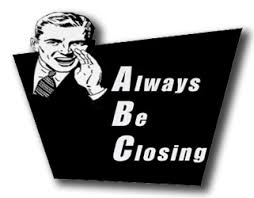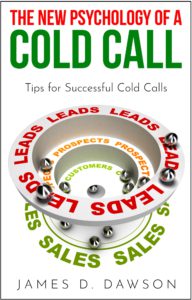Cold calling can be one of the most challenging but effective ways to generate leads and close deals. While the initial call is crucial, it’s often the follow-up that determines whether you succeed or fail. Research shows that it takes 5 to 12 touchpoints before most prospects are ready to engage, meaning that follow-up calls are key to turning initial interest into a sale. And in the world of cold calling, timing is everything.
In this article, we’ll explore the role follow-up plays in cold call success and how to time your follow-ups to maximize results.
Why Follow-Up Is Critical for Cold Call Success
It’s easy to assume that if a prospect doesn’t commit during the initial cold call, they’re not interested. But this couldn’t be further from the truth. People are busy, and while they might not  be ready to take action immediately, many still need your product or service.
be ready to take action immediately, many still need your product or service.
Without follow-up, you’re likely leaving money on the table. Consider these statistics:
- 80% of sales require five or more follow-ups, yet 44% of salespeople give up after one follow-up.
- 60% of customers say no four times before saying yes, but 48% of salespeople never follow up.
Clearly, the majority of sales happen after the initial contact, but that’s only if you stay on top of your follow-up game.
The Timing of Follow-Ups: Why It Matters
One of the most common mistakes in cold calling is failing to follow up at the right time. Too soon, and you risk overwhelming the prospect. Too late, and you miss the window when they remember your pitch. Here’s why timing is crucial:
1. Staying Top of Mind
When you follow up at the right time, you ensure that you stay in the prospect’s memory. The initial cold call often serves as an introduction, but it’s your follow-up that reinforces your message and reminds the prospect why they were interested in the first place.
- Pro Tip: Research shows that following up within 24 to 48 hours after the initial cold call keeps your pitch fresh in the prospect’s mind without coming across as pushy.
2. Hitting the Right Moment of Need
Your initial call might not align with the exact moment when a prospect needs your product or service, but that could change over time. The right follow-up ensures that when the prospect does have a need, you’re there to fulfill it.
- Pro Tip: Use your follow-ups to build rapport and gather more information about the prospect’s timeline or needs. If they’re not ready now, they may be later, and consistent follow-up ensures you’ll be the first company they call.
Best Practices for Follow-Up Timing
The timing of follow-ups can make or break your cold calling success. Here are some best practices to consider:
1. Follow-Up After the Initial Call (Within 24-48 Hours)
Your first follow-up should come within 24 to 48 hours of the initial cold call. At this point, the conversation is still fresh in the prospect’s mind, and this window offers the opportunity to remind them of your value without seeming too eager.
- What to Do: Send a follow-up email or make a second call, reinforcing the benefits you discussed and offering to answer any additional questions.
2. Regular Follow-Ups (Every 3-5 Days)
If the prospect doesn’t respond after your first follow-up, maintain a rhythm of reaching out every 3 to 5 business days. This timeframe keeps your presence consistent without being intrusive.
- What to Do: Vary your communication methods (emails, calls, LinkedIn messages) to see which method resonates best with the prospect.
3. Know When to Give Space
While persistence is key, it’s important not to overwhelm your prospects. After 3-4 follow-ups over a couple of weeks, consider pausing to give the prospect some breathing room. You can check back in a few weeks later, especially if they showed interest but weren’t ready to make a decision.
- What to Do: Set reminders in your CRM to follow up again in a month or two. Timing your follow-up well shows that you respect the prospect’s time, while also positioning yourself to be top of mind when they’re ready to act.
Crafting the Perfect Follow-Up Message
 The quality of your follow-up is just as important as the timing. A great follow-up message is short, to the point, and value-driven.
The quality of your follow-up is just as important as the timing. A great follow-up message is short, to the point, and value-driven.
Here’s what to include in your follow-up:
- A brief reminder of your initial conversation: Start by referencing your initial call to jog their memory.
- Reinforce your value proposition: Highlight the main benefit you can offer them.
- A clear call-to-action: End with a specific next step, such as scheduling a meeting, answering their questions, or offering additional information.
Knowing When to Stop Following Up
Persistence is important, but knowing when to stop is equally vital. After five to six follow-ups, if you’re still not getting a response, it may be time to move on. You can always add the prospect to a long-term nurturing campaign, but pushing too hard can damage your reputation and burn bridges.
Pro Tip: If the prospect explicitly says they’re not interested, respect their wishes. However, ask for feedback on why they’re not interested—that information can be invaluable for refining your pitch for future cold calls.
Follow-Up Timing for Cold Call Success
In the world of cold calling, the follow-up is where the magic happens. It takes more than one call to build rapport, stay top of mind, and eventually close a deal. By mastering the timing of your follow-ups, you increase your chances of turning cold leads into valuable clients.
The key takeaway? Persistence and timing are everything. Don’t let a lack of immediate response deter you—effective follow-ups often make the difference between a missed opportunity and a successful sale.
Final Tip: Use a CRM tool to track your interactions, schedule follow-ups, and ensure that no lead slips through the cracks. With consistent, well-timed follow-ups, you can turn your cold calling efforts into warm results.

Recent Comments